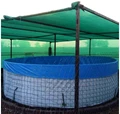
Fish farming is all about raising fish commercially in tanks or enclosures for human consumption. The most important species of fish produced are catfish, carp, tilapia, salmon, etc. Fish farming has seen tremendous growth in the past few years but still, farmers in India are facing many problems in fish farming. Let’s know about them in detail.
Problems in small-scale fish farming
Fish farming has not been fully explored as a policy to reduce poverty levels despite its potential to improve livelihoods in rural communities. The basic problem in fish farming is low productivity, excessive establishment costs, high farm-level losses, and ineffective marketing. The main problem of low level of productivity is due to a lack of appropriate product knowledge and skills, suboptimal stocking, or overstocking.
Difficulties arise from predators such as snakes, monitor lizards, and birds, and also from inappropriate harvesting and post-harvest techniques. Therefore, it is imperative that youth get involved in fish farming using the latest technologies and train other fish farmers.
Challenges faced by small-scale fish farmers for fish production
The main challenges of small-scale farmers are seed availability and also for maintenance, growth, and reproduction functions. Fish uses dietary proteins continuously and the availability of quality and reliable feeds is one of the main challenges faced by the farmers.
Major problems faced by pisciculture
-
Lack of water bodies to harvest fish.
-
Contamination is caused by pesticides.
-
Pollution in the natural water bodies.
-
Huge market demand is comparatively greater than the production rate.
Different types of fish farming
Cage system
The cage system uses cages that are placed in ponds, lakes, and oceans that contain the fish, and this method is also referred to as off-shore cultivation. Basically, fish are kept in cage-like structures and are artificially fed and harvested, especially with reducing diseases and environmental concerns. However, the famous concern of this cage method is fish escaping and being loose among the wild fish population.
Pond systems or irrigation ditch
Pond systems or irrigation ditches are generally the methods for raising fish and the basic requirement for this method is to have a pond or a ditch that holds water. This is a unique method of farming because at a small level, fish are artificially fed and the waste produced from the fish is used as fertilizer for farmers’ fields.
Integrated recycling systems
In this method, we use a large plastic tank that is placed inside a greenhouse and there are hydroponic beds that are placed near the plastic tanks. In hydrogenic beds, the water in the plastic tanks is circulated to the hydroponic beds, where the wastage fish feed provides nutrients to the plant crops that are grown in the hydroponic beds. In hydrogenic beds, the majority of plants that are grown in these beds are herbs such as basil and parsley.









